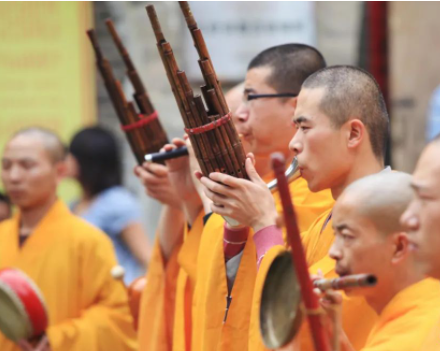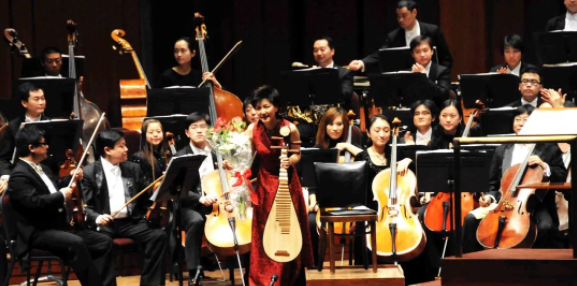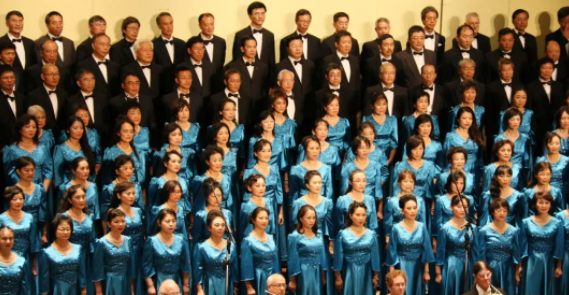Zhao Chonghua: Why create a national music with the spirit of the Chinese nation?
Chinese music emphasizes emotional rhythm, while Western music emphasizes rationality; Chinese music is extremely varied and diverse, while Western music is rigorous in form and complex in structure; Chinese music has the beauty of linear freehand brushwork, and Western music has the beauty of three-dimensional structure...
For a long time, there have been discussions on the similarities and differences between Chinese and Western music, and the debate about "Chinese style and Western use" or "Western style and Chinese use" has also attracted attention. In the 20th century, Chinese musician Wang Guangqi once proposed to create a "national voice" with the characteristics of the Chinese nation - national music.
Why create a national music? Why can't Chinese traditional music "replace it with Western music"? What is the new meaning of national music in today's China? Zhao Chonghua, dean of the School of Art Theory and Management of the Sichuan Conservatory of Music, recently accepted an exclusive interview with China News Agency "Dongxiwen" to give an in-depth interpretation.
The following is a summary of the interview transcript:
China News Service: When did the introduction of Western music culture into China go back? How has it developed?
Zhao Chonghua: To answer this question, we must first clarify the difference between music and music culture. Music usually refers to audio-visual music such as vocal music and instrumental music, focusing on music at the level of personal appreciation; while music culture covers music theory, music education, music system, music technique, etc. A full range of cultural elements.
Judging from the history of music exchanges between China and foreign countries, the introduction of "Western music" in the usual sense into China can be traced back to Zhang Qian's mission to the Western Regions in the Han Dynasty, opening the door for cultural exchanges between China and the West. Music and dance were the focus of music exchanges in this period, and musician Li Yannian created "Twenty-Eight Solutions of New Voices" based on foreign music as a typical example.
From the Wei, Jin, Southern and Northern Dynasties to the Tang Dynasty, musicians introduced music from various ethnic groups in the Western Regions, such as Qiuci, Xianbei, Shule, and Gaochang, into the Central Plains. Music was also introduced to China. Especially during the Tang Dynasty, there was a large influx of Western music, and there were more than 70 kinds of Buddhist music and dance alone, and many foreign musical instruments were "settled" in China.

However, the truly comprehensive and systematic entry of Western music culture into China was completed under the wave of "Western learning eastward" in modern times. Music theory, music technique, performance, singing, music education, etc. were introduced into China in various forms, and entered the music life of ordinary people through the emergence and development of early new military songs and school music songs. At the same time, Chinese musicians such as Li Shutong, Xiao Youmei, and Wang Guangqi used Western music aesthetics as a reference to explore the modern quality of Chinese music and contribute wisdom to the modern development of Chinese music culture.
In the process of "Western music spreading to the east" in the early 20th century, there were two distinct and mutually influencing explorations: Chinese style and western use and western style. Preserving the humanistic spirit and cultural blood of Chinese music and integrating into the world's modern civilization has been the pursuit of Chinese musicians for a century.
The representative of Chinese sports and Western use is Liu Tianhua. He modernized the performance of national musical instruments so that they could "compete" with modern Western musical instrument performance techniques. It now appears that this goal has been basically achieved. For example, after the music played on the violin is adapted into the erhu, the performance technique is also fully competent. In addition, he also introduced the genre of modern Western music into Chinese folk music. Now China has a large number of classic works of folk music written using Western composition techniques and theories, such as the Pipa Concerto "Little Sisters of Heroes from the Prairie" and the Erhu "Concert Etude". This path has been the main direction of the development of Chinese traditional music creation since the beginning of the 20th century.

The representative characters used in Western style are musicians such as Xiao Youmei, Huang Zi and Xian Xinghai. This is a road that tries to inject Chinese humanistic spirit into classical Western music genres such as Western symphony orchestra, piano, opera, and ballet. The predecessors tried to establish a Chinese music school similar to the Russian national music school represented by Tchaikovsky and others, so as to directly incorporate Chinese music into the world system dominated by Western music genres. This path is the mainstream of professional music creation in China. The Yellow River Cantata and the violin concerto The Liang Zhu are all successful cases.
From the perspective of the history of Chinese civilization, "diversity and unity" has always been the main feature of Chinese music. The strong national personality of the Chinese nation and the firm determination to integrate Chinese civilization into the world have determined that the long-term tolerance and collision of tradition and modernity will become normalized. Chinese music will continue to move forward along the above two paths. When the new classic works reach the limit of quantity, qualitative changes will naturally occur, and the new development paradigm of Chinese music will be established again.

China News Service: What are the similarities and differences between Chinese and Western music in history? what is the reason?
Zhao Chonghua: Wang Guangqi has creatively divided world music into three major music groups: Greek music, Persian Arabic music and Chinese music. Different geographical environments and national characters will inevitably create different musical aesthetics, and if the aesthetics is reflected in the form of music, different musical systems can be formed.
The similarities and differences between Chinese and Western music can have various answers from different angles, but the reason for these similarities and differences, as Wang Guangqi said, stems from the differences in scales. That is to say, the root of the difference between Chinese and Western music styles lies in the pentatonic scale system of Chinese music and the major and minor scale system of Western music.
The difference in aesthetic orientation between Chinese and Western music is even more obvious. The linear thinking of Chinese music is fundamentally different from the three-dimensional thinking of Western music. Just like the difference between Suzhou gardens and Versailles. Changing scenery and advocating nature are the consistent pursuits of Eastern art, and the logic and speculativeness presented by Western art have been continuously strengthened since the Renaissance, which has become its distinctive feature.
The discipline of Western musicology was gradually established after the mid-19th century. The Chinese study of music has already formed a unique system in the long history. While in line with modern times, inheriting and developing China's inherent music academic tradition is a problem that Chinese musicology must face. To give a simple example, Chinese music philology not only needs to introduce Western positivist methods and library science classification systems, but also cannot do without academic research methods such as editions, catalogs, collation, compilation, and identification of forgery in classical Chinese philology.
At the same time, the research methods of western ethnomusicology fieldwork have a high reference value for the study of Chinese ethnomusicology. In 1979, the Ministry of Culture of China and the Chinese Music Association jointly presided over the editing of the "Five Collections": "The Collection of Chinese Folk Songs", "The Collection of Chinese National Folk Instrumental Music", "The Collection of Chinese Quyi Music", "The Collection of Chinese Opera Music" and "Chinese Qin Music". integrated". The folk music investigation activities of Chinese scholars have not only provided a reliable document basis for traditional music research, but also preserved many precious memories that are about to disappear for human beings.
From the perspective of human music as a whole, the music of different ethnic groups has its own characteristics and there is no difference between them. It has become a consensus in academic circles to respect the music culture of all ethnic groups and not to measure and evaluate other ethnic groups based on the characteristics of a certain ethnic group. In today's world and society, where multiple cultures coexist, and "each has its own beauty, and the beauty of the beauties" between cultures, can we achieve "beauty and beauty together, and the world is united". We should have such tolerance and vision.

China News Service reporter: Why does Wang Guangqi think that Chinese music "must be created by ourselves", but "we cannot force Western music to replace it"? What characteristics should an ideal Chinese traditional music have?
Zhao Chonghua: There are very complicated reasons for the formation of Chinese humanistic spirit, but some factors are necessary. To study the national character of Chinese music is to find out these factors. The idea of national music proposed by Wang Guangqi in the early 20th century is to create music with the "national character" of the Chinese nation and reflect the national spirit. In addition to the Confucian tradition and its core concepts of music, it also comes from his musical ideals in the comparative study of Chinese and Western cultures.
Today, China has already come out of the predicament of being poor and weak for a hundred years, and the reality of the development of Chinese music has also undergone tremendous changes. The national music of the new era should adapt to and express this change, and create works that are full of national and cultural self-confidence, express the Chinese national spirit, and conform to the Chinese traditional aesthetic taste.
There is no need to dogmatically stipulate what kind of music belongs to Chinese national music. The piano performance "Pinghu Qiuyue" is Chinese national music, and the flute concerto "Choukong Mountain" is also Chinese national music. Today in the 21st century, China, which has 56 ethnic groups, is building a system of national music based on the foundation of Chinese national music and cultural traditions. As long as it expresses the spirit of the Chinese nation, conforms to traditional aesthetic characteristics, and embodies Chinese style and spirit, it belongs to Chinese national music.
 渝公网安备 50010702504639号
渝公网安备 50010702504639号